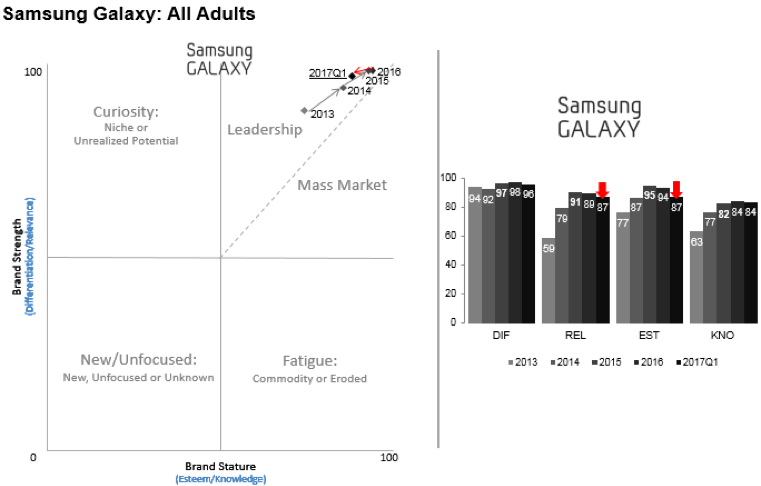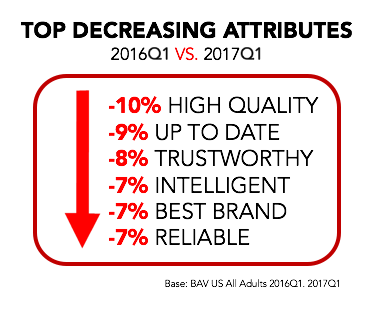Has Samsung Doused Its Smartphone Fiasco?
04.01.2017
Samsung had a difficult second half in 2016. It began well in August with the launch of the Galaxy Note 7 smartphone to record preorders and sales, but then quickly spiraled downhill. The company was plagued by the recall of the first version of the phone, the recall of the replacement version and, finally, the discontinuation of the product. Samsung had touted the Galaxy Note as its most advanced 5.7-inch, stylus smartphone, until reports of the phone catching fire while charging surfaced. Samsung believed the cause was faulty batteries issued by third-party vendors. However, after it recalled the phones and issued replacement batteries, the problem did not subside. Samsung then admitted it did not know the root cause and thus, in October, discontinued the product. The lithium-ion battery fiasco decreased the perception of the quality of, and trust in, the Samsung Galaxy brand and caused customers to rethink their smartphone choices. We can use the BAV® model to examine how the Samsung brand was affected by the debacle and how it is doing today.

Although the brand itself that is the multinational conglomerate Samsung Group was not significantly affected, the company’s mobile sub-brand, Samsung Galaxy, was. Between 2012 and 2015, Samsung Galaxy was a strong leadership brand, consistently increasing its position on the BAV PowerGrid and its equity on the four pillars. After the battery disaster in the third quarter of 2016, the brand declined and regressed closer to its 2014 position. The battery issues caused a sharp decrease in Relevance—a measure of a brand’s appropriateness in the lives of consumers, which relates to household penetration—and in Esteem, a measure of how highly regarded a brand is, which relates to consumers’ usage of and loyalty to the brand.

A closer look into the data reveals that Samsung Galaxy experienced the sharpest decline in brand position and equity right after the battery catastrophe in the fourth quarter of 2016. Samsung recalled over two million devices and discontinued the product at an estimated cost of $5.3 billion. At that time, Samsung Galaxy’s Relevance and Esteem fell dramatically. However, in the first quarter of 2017, Samsung Galaxy saw an upsurge in Relevance and Esteem. The brand’s position is now moving back toward its stronger leadership position due to remedial steps taken by the company. In November 2016, Samsung released a series of full-page advertisements in several major daily newspapers, including the New York Times, Wall Street Journal and Washington Post, apologizing for the brand’s mishap. The ads read, “An important tenet of our mission is to offer best-in-class safety and quality. Recently, we fell short on this promise. For this we are truly sorry.” Since then, Samsung has worked hard to win back consumers’ trust. In January of 2017, Samsung implemented an 8-Point Battery Safety Check that puts its batteries through rigorous testing and careful inspection. Samsung also introduced a new campaign during this year’s Oscar Award show emphasizing the tagline “Quality is our priority.” The commercials depict an assembly line of the myriad of tests performed on the phones before they leave the factory floor. One commercial solely focuses on the battery safety check. Will this communication gain back the trust of the public?

Samsung Galaxy’s brand was hit hard by the battery fiasco. Even though the brand seems to be recovering in the first quarter of 2017 and increasing its leadership position, the brand experienced declines in associated imagery related to quality and trust. Compared to the first quarter of 2016, in the first quarter of 2017, Samsung Galaxy declined on associations to high quality, up to date, trustworthy, intelligent, best brand and reliable. Samsung seems to be working on increasing these associations. Younghee Lee, VP of Samsung’s mobile business stated, “We must not only win back customers' trust, but also the high expectations that they have always held for Samsung.” Samsung is hoping to restore its brand image and leadership position with the release of its Galaxy S8 smartphone on April 21. The latest phone includes a new digital assistant, iris and fingerprint scanning, a display of either 5.8 or 6.2 inches diagonally and many more features. The standard size S8 and the larger S8 Plus will both cost about $100 more than comparable iPhones and Android phones. Will customers take the risk of buying another Samsung smartphone? Time will soon tell.
Written by Allison Sommer.
